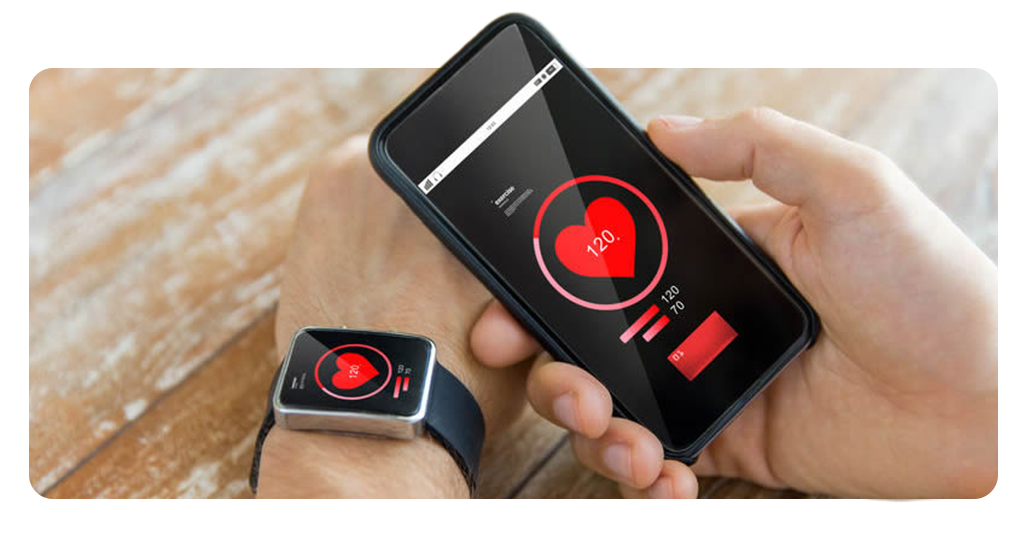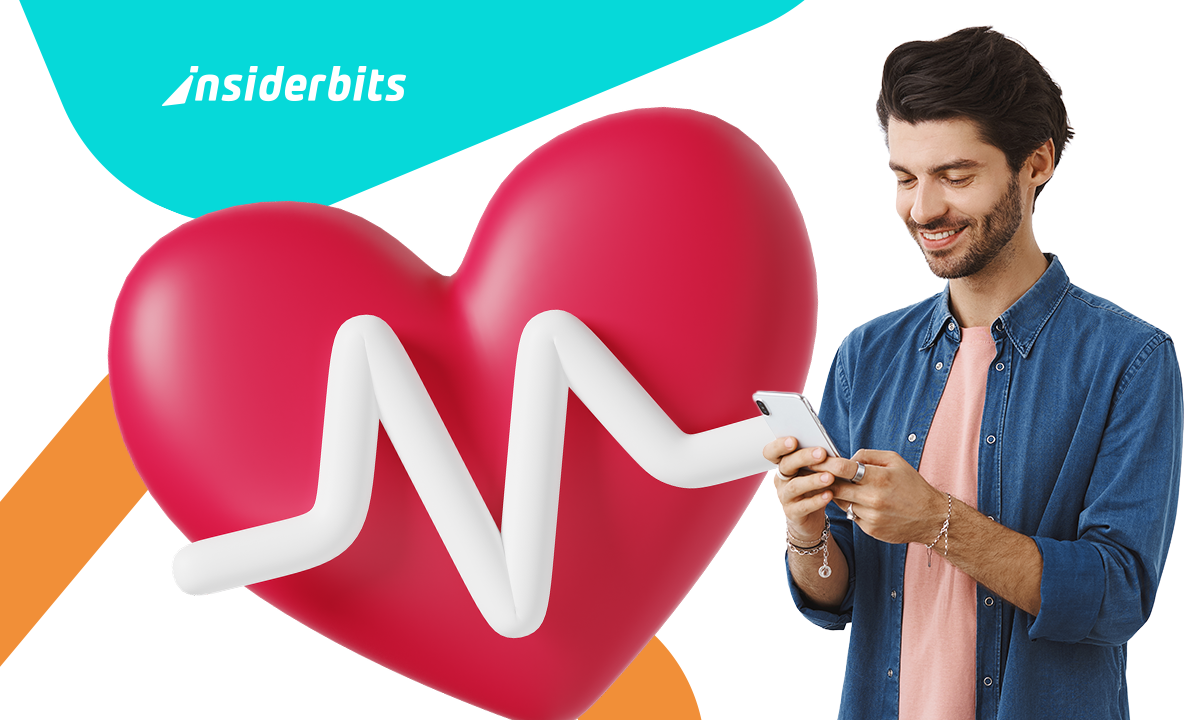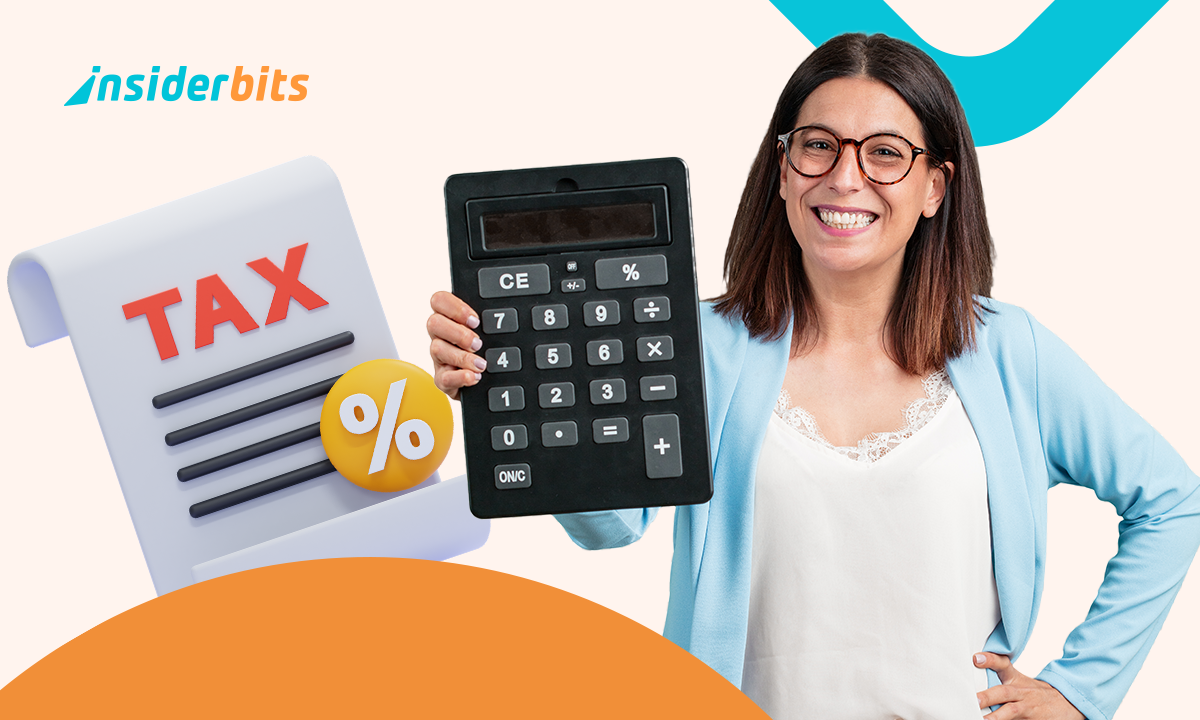Your phone can do more than take photos or count steps. It can also measure your heart rate using just the camera and flash. No extra gear required.
It works in seconds but knowing when and how to use it makes a big difference. Small details like lighting or finger placement can change your results more than expected.
This guide by Insiderbits explains what works, what does not, and how to make the most of every reading. Keep going for insights that actually make sense.
En rapport : Une technologie de télésanté qui va bien au-delà des appels vidéo
Why you should measure your heart rate
Your heartbeat reflects more than just physical activity. It responds to stress, sleep, and emotion, offering subtle clues about how your body feels before symptoms appear.
That is why it makes sense to measure your heart rate regularly. With just your phone, you can track changes, monitor patterns, and stay more in tune with your health.
Resting BPM and what it reveals about your body
When your body is calm, your heart should be too. A lower resting BPM often reflects good cardiovascular health and a system that isn’t under unnecessary pressure.
A consistently high resting BPM might point to hidden issues. It can signal dehydration, anxiety, illness or even poor sleep quality that your body hasn’t fully recovered from.
Tracking resting BPM over time helps build a baseline. That baseline becomes a personal reference for spotting changes, which might deserve attention.
Daily tracking for fitness, wellness, and peace of mind
Small changes in heart rhythm can show how your body reacts to stress, rest, or exercise. These shifts offer more insight than most people realize day to day.
If you measure your heart rate regularly, it becomes easier to spot signs of progress or fatigue. This helps support your goals and prevents unnecessary strain or setbacks.
Even beyond fitness, this habit offers a reset. A quick check-in brings awareness and calm, turning a small moment into something that supports balance and well-being.
When monitoring your heart rate can raise red flags
Some heart rate patterns deserve a second look. If numbers seem unusually high or low without an obvious cause, it might be your body signaling that something is off.
Spikes during rest or a rate that stays elevated after light activity could point to an issue worth discussing with a healthcare professional sooner rather than later.
Not every fluctuation is serious, but repeated changes should not be ignored. Paying attention to trends helps you catch problems early instead of reacting too late.

How camera-based heart rate tracking actually works
Smartphones can do more than count steps or send reminders. With just a finger and camera, they can detect real-time changes inside your body through simple light patterns.
Your fingertip holds a network of blood vessels just beneath the skin. Apps use this area to measure your heart rate without needing external devices or complex wearables.
What is PPG, and how does it work?
Photoplethysmography sounds complicated, but the idea is simple. As your heart pumps blood, the volume in your fingertip subtly changes. That shift affects how light moves through the skin.
By analyzing those changes, the app estimates pulse intervals. With enough data, it builds a picture of your heartbeat rhythm and adjusts with each new pulse detection.
The role of your flashlight and camera in measuring blood flow
Your phone’s flashlight isn’t just for dark rooms. It shines through your fingertip, making capillaries easier to detect based on the amount of light they reflect or absorb.
The camera records those changes frame by frame. When processed together, the data reveals a pattern that aligns with each heartbeat, making the pulse readable in seconds.
Phone apps vs dedicated heart rate monitors: key differences
Many apps make it simple to measure your heart rate, but they aren’t built like professional tools. The differences can impact both accuracy and use cases.
- Light source control: phones rely on ambient conditions and flashlight brightness, while wearables use calibrated LEDs that reduce interference from skin tone;
- Sensor stability: dedicated devices stay firmly in place during activity, while finger-based readings can suffer from movement and inconsistent pressure on the lens;
- Data depth: apps often show BPM and trends, but wearables offer richer data like oxygen saturation, continuous HRV, and exercise zone alerts;
- Long-term tracking: professional monitors log heart rate 24/7, including sleep. Most phone apps require manual readings, limiting insights across different times of day;
- Medical precision: some wearables are cleared for clinical use, while camera-based apps are considered informational tools, not diagnostic-grade instruments.
En rapport : L'essor de la santé à domicile : Les meilleures applications médicales à utiliser à domicile en 2025
Best practices for accurate readings every time
Accuracy starts before the app even opens. Taking a few moments to prepare your environment and body can make a noticeable difference in the results you see.
Bright light and a relaxed posture already solve half the problem. When done right, it becomes easier and more reliable every time you measure your heart rate with your phone.
Think of it like brushing your teeth. You wouldn’t rush through the steps or skip key parts. That same attention matters when turning a reading into meaningful health data.
Stay still, stay lit: how to prep for a better reading
Movement throws off the signal. Even a slight shake changes how your camera reads blood flow, making results less consistent than they should be.
Lighting helps amplify those subtle changes. Using your flashlight or sitting near natural light can make a huge difference in how well the app captures your pulse rhythm.
Placement matters: finger pressure, position, and cleanliness
Too much pressure reduces blood flow and affects the signal. Too little, and the app can’t detect anything. A gentle, steady touch is always your best bet.
Also, clean the lens. Smudges block light and distort results. Center your fingertip carefully so the flash spreads evenly and your heartbeat gets picked up properly.
Why measuring after workouts can lead to false results
After exercise, the body stays in high gear. If you measure your heart rate during this time, you’re capturing recovery instead of a stable resting pulse.
Sweat, movement and elevated breathing confuse the sensor. For meaningful data, wait until you’re fully calm. That’s when the reading will reflect your real baseline.
Health insights beyond BPM: stress, HRV, and recovery
Heart rate is only part of the picture. The time between beats often reveals deeper clues about stress, recovery, and how your body is handling daily demands.
Modern apps go beyond counting beats. They detect patterns tied to fatigue, mood shifts, and nervous system balance, offering a broader view of your physical and emotional state.
What is HRV, and why does it matter?
Heart rate variability is the time between each heartbeat. Even small shifts carry useful information about how your body responds to stress, rest and external conditions.
Higher variability often means your body is resilient and relaxed. Low variability might suggest fatigue, poor recovery or physical tension that your conscious mind hasn’t registered yet.
Can heart rate apps really detect stress?
Some apps use pulse data to estimate stress by analyzing rhythm changes. While not perfect, they offer helpful context when paired with how you feel physically and emotionally.
Spikes, drops or patterns out of the ordinary may align with moments of anxiety or fatigue. These signals make it easier to recognize what’s affecting you daily.
How trends and graphs offer long-term insight
When you consistently measure your heart rate, the data becomes more than numbers. It forms a pattern that reflects lifestyle changes, stress events and daily habits.
Graphs and trends help connect those patterns to specific behaviors. Over time, you can spot what improves recovery and what might be silently draining your energy.
En rapport : Enhancing Health and Wellness Through Smart Jewelry
Is phone-based heart rate monitoring reliable long term?
Using your phone to check your heart rate is simple, but results can vary. Lighting, motion, and consistency all play a role in how accurate readings appear.
Phones offer convenience, not clinical precision. Variables like skin tone, temperature, or an unsteady hand may influence the outcome more than most users realize at first.
That said, if you measure your heart rate regularly and follow best practices, these tools can offer useful feedback. Explore the apps above to find one that suits you.
Instant Heart Rate: HR Monitor
Instant Heart Rate offers fast readings with a clean interface, making it an easy pick for those curious about tracking basic wellness without added complexity.
By using your phone’s camera and light, it detects subtle changes in your fingertip. The process is straightforward, and results are clear even on your first try.
It is a practical way to measure your heart rate at home, especially if you want to build awareness around patterns and trends without relying on extra devices.
Instant Heart Rate’s best features
- Quick readings in seconds: place your finger gently on the camera and get fast, clear pulse data without extra equipment or wearables;
- Simple interface and history tracking: charts and logs make trends easy to spot, helping you understand changes in rhythm and build consistent daily monitoring habits;
- No account required: use core features right away without creating profiles, ideal for quick checks or low-commitment daily monitoring habits.
4.9/5
Heart Rate Monitor – Pulse App
This app delivers reliable readings through a clean, easy-to-use interface. It is designed for anyone who wants to understand more than just basic numbers and graphs.
The Pulse App helps you measure your heart rate with context, linking results to sleep, mood, or movement. Over time, it creates a clearer picture of daily patterns.
It also includes HRV estimates for insights into stress and recovery. With steady use, the app turns individual readings into a meaningful view of your body’s rhythm.
Heart Rate Monitor – Pulse App’s best features
- Session tagging and notes: link readings to emotions, workouts or rest to better understand how your heart reacts throughout daily activities;
- Detailed graphs and HRV estimates: view visual trends and recovery insights that support better awareness of how your body responds to rest, stress, and daily activities;
- Clean layout with zero clutter: Every feature is easy to find, making the app practical for quick checks or deeper monitoring sessions anytime you choose.
4.9/5
Cardiio: Heart Rate Monitor
| Prix : | Free, with subscription plans available. |
| Disponible pour : | iOS. |
Cardiio combines simplicity with smart design, making it easy to check your pulse wherever you are. It’s a reliable option if you’re looking to measure your heart rate quickly and clearly.
The app offers instant readings along with performance charts and wellness insights. It also estimates fitness levels over time based on your pulse trends and resting heart behavior.
Cardiio doesn’t require sign-ups, which makes it quick to start. Regular use helps build awareness and supports better choices around stress, movement, and rest.
Cardiio’s best features
- Fitness level estimator: offers VO2 max approximations and performance trends to help users understand cardiovascular health without requiring physical exertion tests;
- Instant pulse checks: simple layout makes it easy to track progress and stay motivated by seeing real-time changes in how your heart responds each day;
- No account required for access: start using the core features immediately, without login screens or setup delays that interrupt quick health check routines.
4.7/5
From readings to real wellness awareness
Keeping track of your heart can be simple and helpful. With just your phone, it becomes easier to stay in tune with what your body needs.
This guide was crafted by Insiderbits to make it easier for you to measure your heart rate without extra gadgets or complicated routines in your everyday life.
Curious about other smart ways to track health and habits? Keep reading Insiderbits for practical guides that help you stay connected to what really matters.






